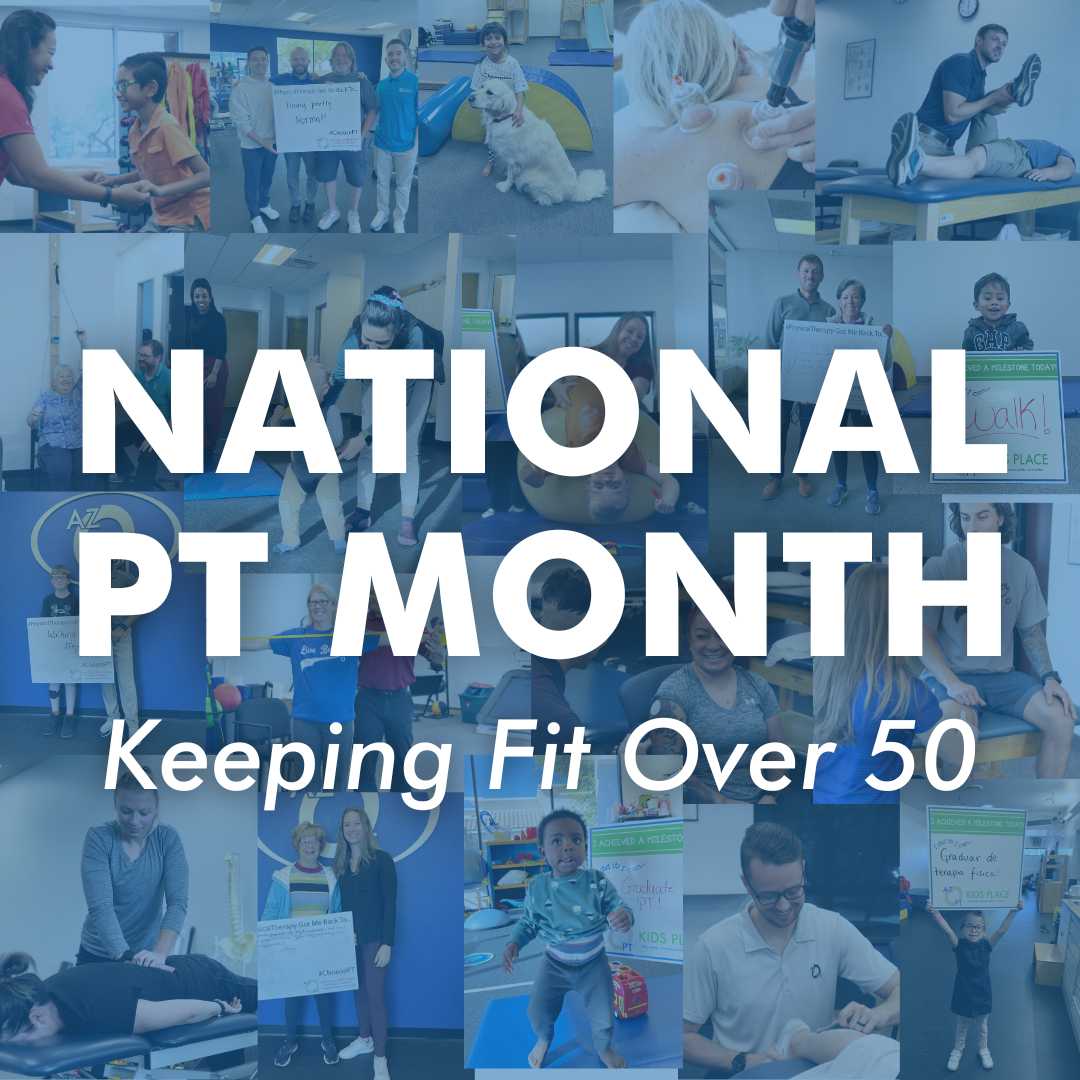Celebrate National Physical Therapy Month with Activity!
This October, we celebrate National Physical Therapy Month (NPTM)! NPTM is an awareness celebration held each October by the American Physical Therapy Association (APTA) to recognize the important roles physical therapists play in restoring and improving motion in people’s lives. Nobody understands this more than the “Active Adult” community. Also known as Baby Boomers, the active adult community is one of the largest and most powerful generations in the United States. They have redefined aging and are more educated, wealthy, and tech savvy than their parents or any generation preceding them.
However, a Harvard study has found that too many boomers are overweight or obese, increasing the risk for chronic health conditions such as heart disease, type 2 diabetes, and certain cancers. Further, as we age we may lose flexibility, strength, and balance, which makes staying fit after 50 challenging for even the most determined baby boomers.
Working with a physical therapist can help boomers address these challenges, maintain fitness, and avoid injury – in many cases without expensive surgery or long-term use of prescription medications. Physical therapy is no longer simply just about rehabilitation. Physical therapists can help restore and improve motion to achieve long-term quality of life. Physical therapists significantly improve mobility, and ability to perform daily activities.
Physical activity may be the closest thing we have to the ‘fountain of youth.’ Yet it’s a fact of life that health and mobility concerns often arise as we grow older. The good news is that we can keep many of these concerns at bay through regular physical activity.
Being active plays a crucial role in improving and preserving health and quality of life. Regular physical activity can improve bone density, posture, heart and lung function, muscle strength, joint function, sleep, and memory, among many other benefits. By sticking with a physical activity plan, Baby Boomers can lower their risk of health conditions such as fractures, falls, depression, certain cancers, stroke, hypertension, heart disease, and diabetes.
As experts in restoring and improving motion in people’s lives, physical therapists define physical fitness as having good aerobic capacity, muscle strength and endurance, and flexibility. We encourage adults to get at least 150 minutes of moderate-intensity or 75 minutes of vigorous-intensity physical activity, or an equivalent combination of the 2, each week. In addition, we recommend working all major muscle groups — arms, shoulders, chest, abdomen, hips, back, and legs at least 2 times per week and incorporate flexibility activities such as stretching, dancing, and yoga, into a physical activity regimen.
Physical therapists are uniquely qualified to help boomers stay fit and mobile. To learn more about how we can help you at AzOPT, please visit our website or email fitafter50@azopt.net.
The American Physical Therapy Association (APTA) is an individual membership professional organization representing more than 85,000 member physical therapists. APTA seeks to improve the health and quality of life of individuals in society by advancing physical therapist practice, education, and research, and by increasing the awareness and understanding of physical therapy’s role in the nation’s health care system.







